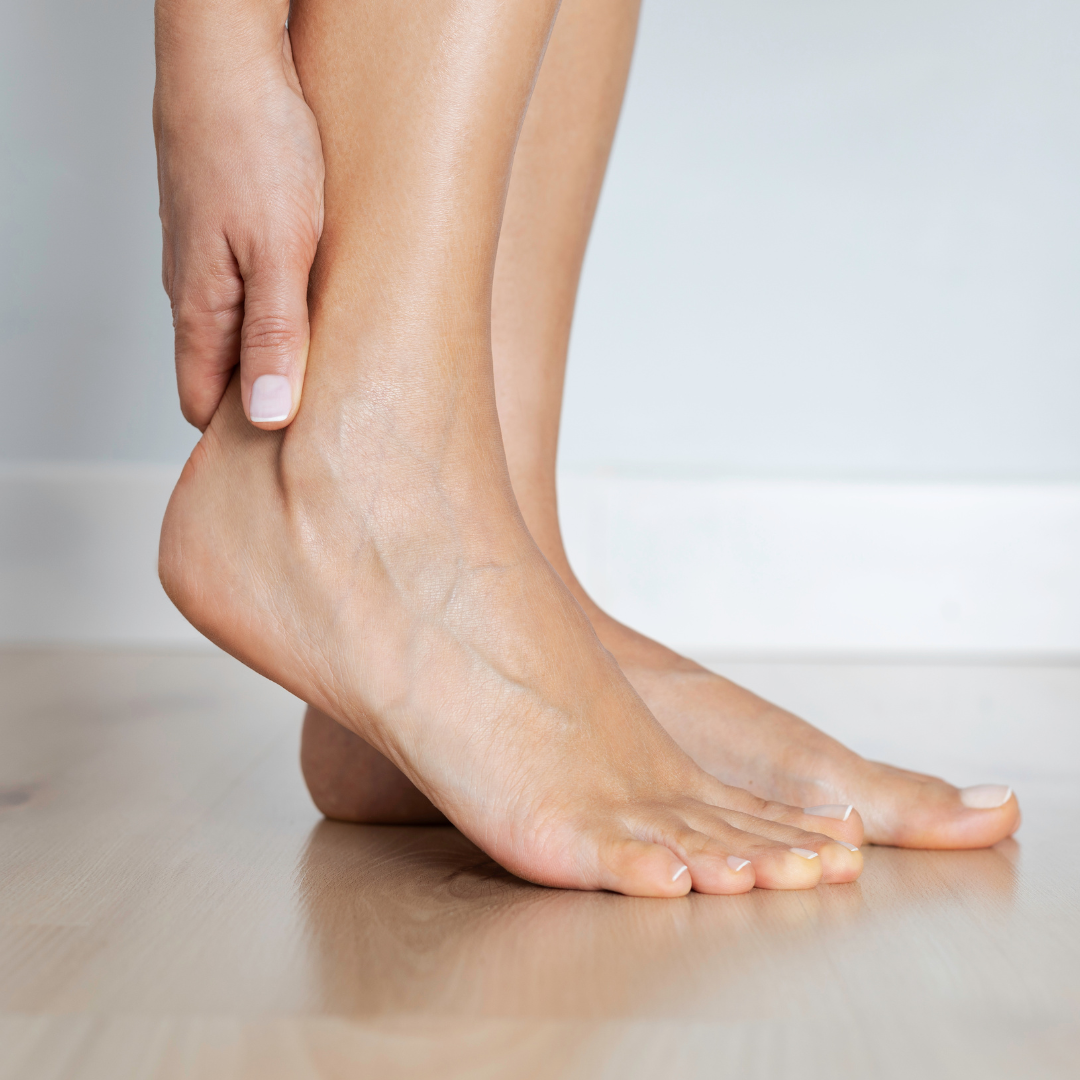Over-Pronation: How It Impacts Your Daily Life and What You Can Do

Ever had your feet described as flat as a pancake? Or perhaps you've been told you walk like a penguin? Maybe you've heard terms like "over-pronation" or “hyper-pronation” thrown around in the context of how you walk or stand . If any of these sound familiar, you're not alone! In this blog post, we're going to chat about something that affects many of us, whether we realize it or not: over-pronation. We'll break down what it means, how it affects your daily life, especially if you love to run, and what you can do about it. So, grab a comfy chair and let's dive into the world of feet!
The Anatomy of Over-Pronation
To comprehend over-pronation, it's essential to first picture the ideal foot gait. In an ideal scenario, your foot strikes the ground with a specific sequence; beginning with a gentle landing on the heel, acting as a shock absorber. As your body's weight shifts forward, your foot fully meets the ground, ensuring even contact along its length. This provides stability during a moment called mid-stance, distributing your weight evenly. As your weight shifts further forward, your foot subtly rolls inward. The toes then push off to move you forward and initiate the next step. This sequence disperses shock efficiently, allowing you to move with ease.
Now, let's delve into the world of over-pronation. This condition disrupts the natural harmony of your foot's biomechanics. During each stride, instead of maintaining that gentle inward roll, the foot excessively rolls inward. This action causes your arch to flatten, resulting in a stretched-out position. The consequence? Increased stress on the ankles, knees, and hips, which can lead to discomfort and potential injury.
Understanding the Causes
Several factors contribute to over-pronation:
- Foot Structure: Some individuals have naturally flatter feet or low arches, increasing their susceptibility to over-pronation. A lower arch can disrupt the foot's biomechanics by reducing its ability to act as a shock absorber.
- Muscle Weakness: Weakness in the muscles supporting the foot's arch can contribute to over-pronation. These muscles play a critical role in maintaining the arch's shape during movement.
- Footwear Influence: Ill-fitting or un-supportive shoes can worsen over-pronation. Shoes lacking proper arch support and cushioning fail to provide the necessary stability, allowing excessive inward rolling of the foot.
- Genetics: Genetic factors can influence foot structure and function. If you have a family history of over-pronation or flat feet, genetics may increase your susceptibility to this condition.
The Impact on Daily Life
The risks of over-pronation aren’t limited to seasoned athletes or long-distance runners. It can affect anyone, from the weekend warriors to individuals who spend long hours of their day on their feet. Here's a closer look at how over-pronation may be impacting your daily life:
Acute Pains and Discomforts:
If you're someone who is occasionally active or spends extended hours on your feet, your over-pronation may be the root cause to some discomfort or sensitivity you are experiencing, including:
- Foot Pain: Foot pain associated with over-pronation is primarily centered around the arches and heels of your feet. It can be most noticeable during weight-bearing activities, such as standing, walking, or running. Pain tends to intensify as you spend more time on your feet, however morning foot pain (following rest) is common as well, often characterized by stiffness and discomfort.
- Ankle Sensitivity: The rolling motion of your foot caused by over-pronation puts added stress on the ligaments and tendons surrounding the ankle joint. This can result in tenderness, swelling, or even a feeling of instability around their ankles. Discomfort it typically prominent after periods of activity.
- Knee Discomfort: The misalignment of your feet can cause knee pain, particularly around the kneecap. This discomfort can be intermittent, but often worsens following exercise/activity, and over time it can lead to chronic knee issues if left unaddressed.
Chronic Injury risks for Avid Runners:
For those who embrace running as a way of life, or simply the highly active among us, unaddressed over-pronation can lead to persistent injuries, including:
- Plantar Fasciitis: Over-pronation can cause micro-tears and inflammation of the plantar fascia due to excessive stress on the thick band of tissue that runs along the bottom of the foot. Over time, this inflammation manifests as sharp, stabbing pain in the heel area.
- Shin Splints: Over-pronation can significantly alter your lower limb biomechanics, placing added stress on the muscles and bones of the lower leg. This can result in shin splints, which are characterized by pain along the shinbone (tibia).
- Achilles Tendonitis: The Achilles tendon, which connects the calf muscles to the heel bone, can become inflamed due to the excessive pronation.
- Stress Fractures: The increased load on the foot and lower leg caused by over-pronation can heighten the risk of stress fractures. These are tiny cracks in the bones of the foot or lower leg. Stress fractures are notorious for their persistence and can result in chronic pain.
Managing your over-pronation
For the runners out there – surface matters. The surface you choose for running can influence how over-pronation affects you:
- Road Running: Smooth, even surfaces like roads provide better stability for those with over-pronation. Stability shoes with arch support are also beneficial.
- Trail Running: Uneven terrain can be more challenging for over-pronators. Look for trail shoes designed with stability features, and pay close attention to your footing.
Aside from where you choose to run, there are a range of other measures you can take to effectively manage over-pronation:
Short-Term Solutions:
- Opt for running shoes that offer stability and motion control.
- Consider orthotic inserts to provide extra arch support and alleviate discomfort.
- Use taping or bracing techniques for immediate relief during physical activities.
- Incorporate regular calf stretches and massages to maintain flexibility and reduce tension.
- If you experience acute pain, allow your body to recover by taking short breaks from strenuous activities.
Long-Term Solutions:
- Consult with a biomechanical specialist to assess your unique condition.
- Follow their advice, which may include custom orthotic inserts tailored to your foot mechanics.
- Engage in strength and balance exercises that target the muscles supporting the arch of your foot.
- Seek professional guidance to improve your gait and running form, addressing biomechanical issues.
- Carefully manage your training intensity, and make sure to progress gradually with activities that are heavy on your feet, to allow your body to adapt without overloading it.
Living with over-pronation doesn't mean sacrificing an active lifestyle or the joy of running. Armed with knowledge and a proactive approach, you can navigate the challenges and continue enjoying physical activities with confidence. It's about understanding your unique biomechanics, embracing proper support, and taking steps towards optimal foot health. Your journey to pain-free living starts now!
Helping you get back out there - Zlaant
